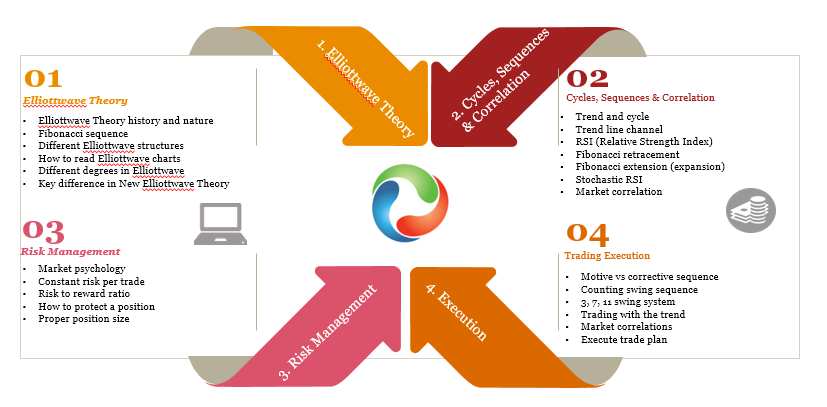In the video seminar below, we discuss about how to read and label Elliott Wave charts. The following excerpt comes from the opening of the video. You can skip to the video directly if you want to watch the seminar
Key Steps to Read Elliott Wave Charts
Steps to read Elliott wave chart:
- Look at Elliott wave chart from the higher time frame to the lower time frame (weekly -> daily -> 4 hour -> 1 hour). Get a feeling about the current cycle of the instrument relative to the overall direction
- Identify the same degree of Elliott wave labels (e.g. super cycle, primary, intermediate, etc)
- Identify the largest degree Elliott wave structure first
- Then go down and identify the smaller degree Elliott wave structure
The seminar also explains how to use Elliott wave degree, which is like the dictionary to read an Elliott Wave chart. Elliott wave degree is Elliott wave language to identify cycles so that analyst can identify position of a wave within overall progress of market
How to Label Elliott Wave Charts Correctly
Steps to label Elliott wave charts:
- In the highest time frame (e.g weekly), identify main trend when possible and main connectors
- Identify Elliott wave structure from the highest time frame first, then label it using the highest Elliott Wave degree
- The main task is done after you finish labelling the biggest time frame. Subsequent tasks only put the details of subwaves in lower time frame
- Go down to one lower time frame and fill in the subwaves label using the appropriate Elliott wave degree
- Continue to fill in the subwaves labels in next lower time frames using progressively smaller Elliott wave degrees
Full Elliott Wave Reading and Labelling Seminar
Expand Your Trading Knowledge with EWF
To learn more about Elliott Wave and our trading technique of 3, 7 or 11 swings, check out our Educational classes and sign up for a 14 day Trial. At EWF, we cover 52 instrument in different asset classes from forex, commodities, and indices. We provide Elliottwave forecast in 4 different time frames, Live Trading Room, 24 hour chat room, live sessions, and much more.
The four essential building blocks of technical trading with Elliott Wave theory
Back

